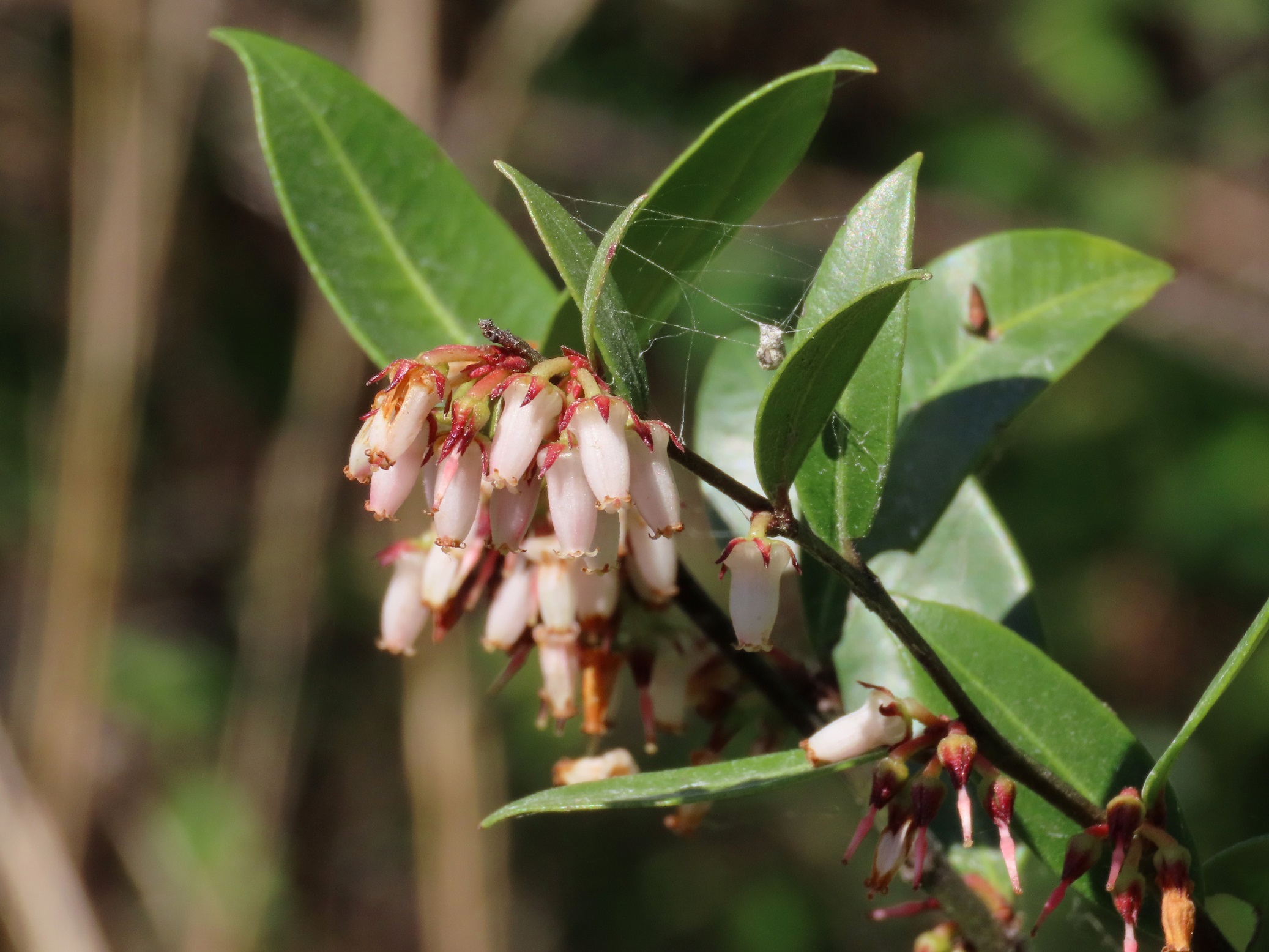
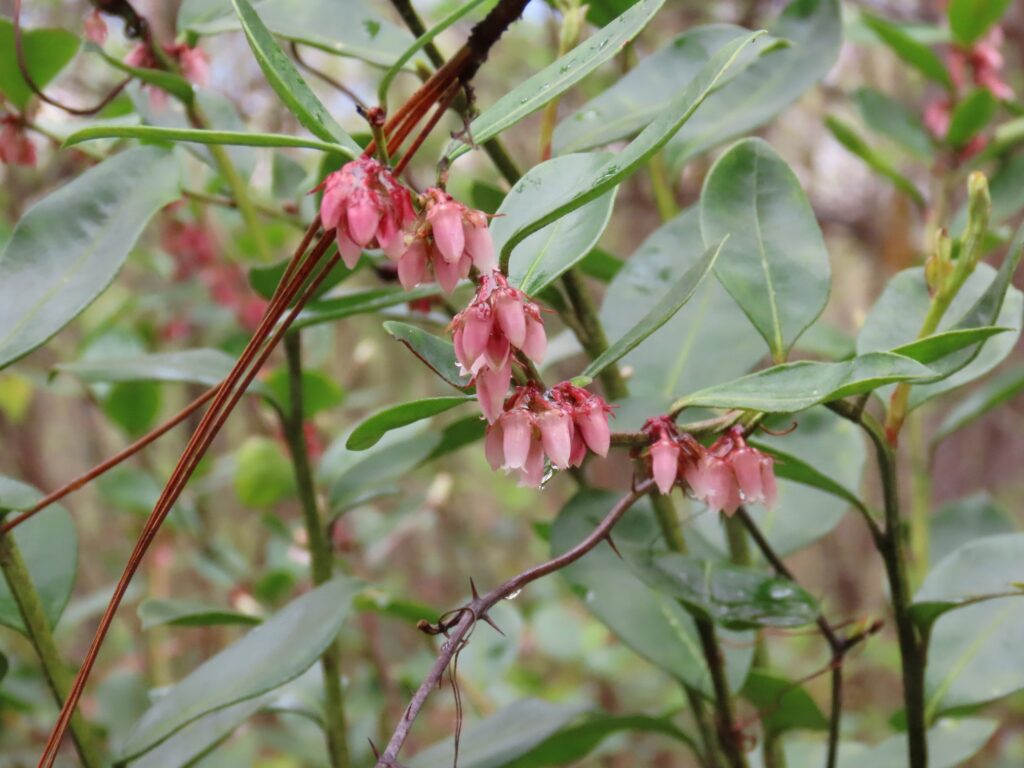
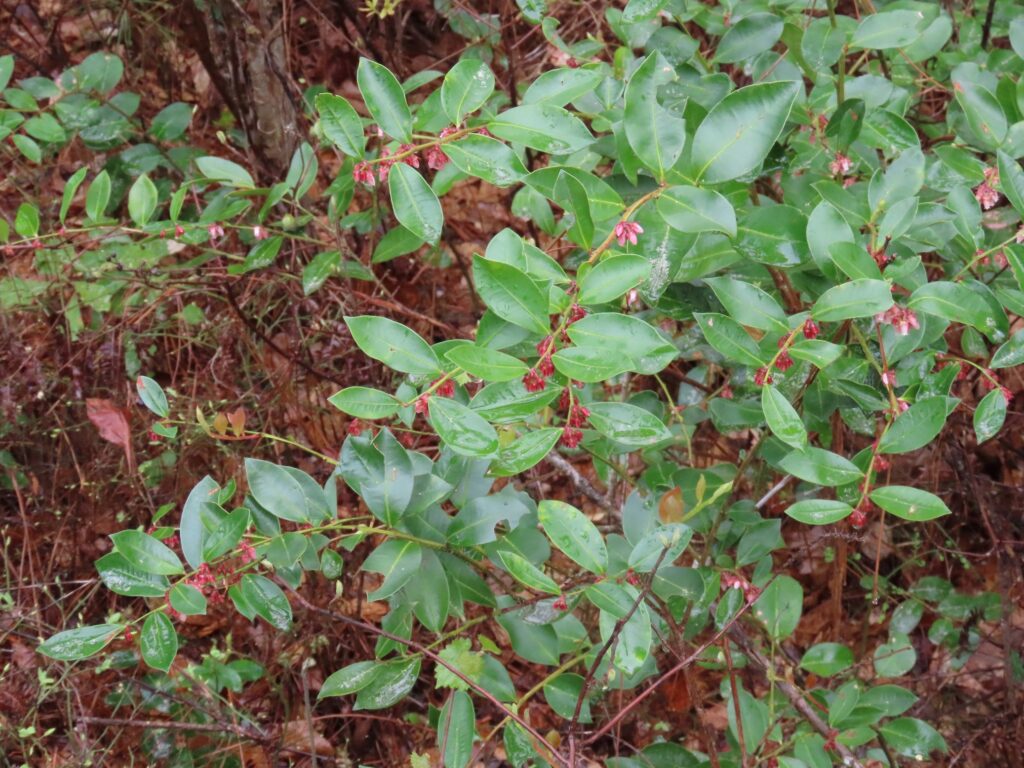
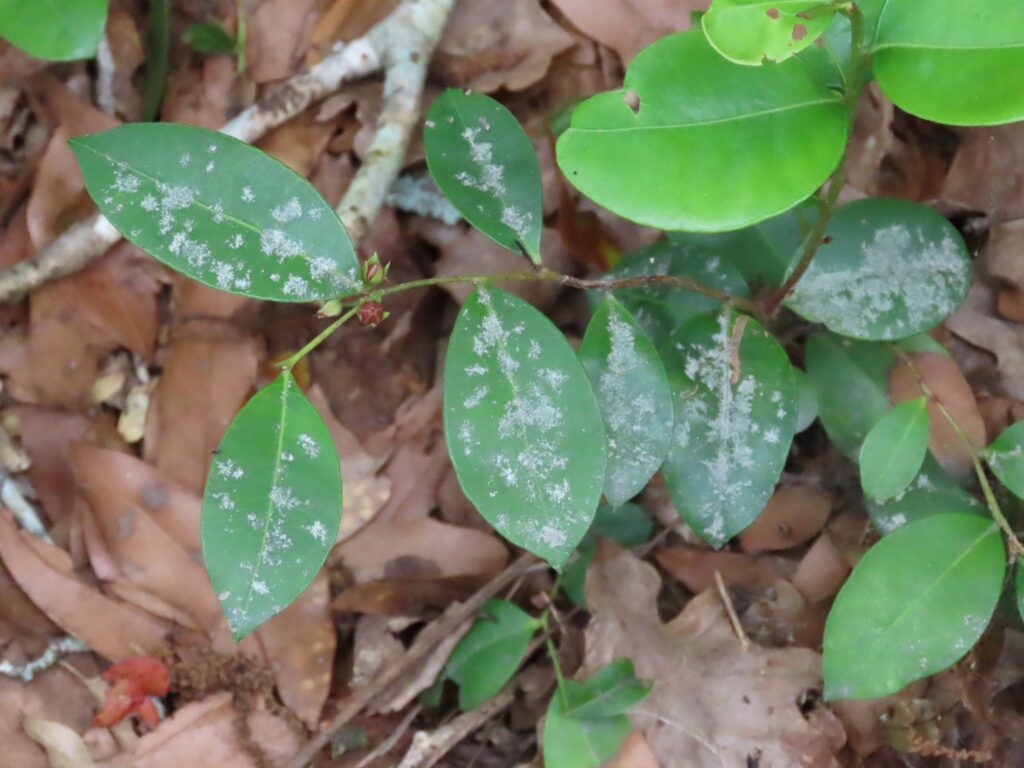
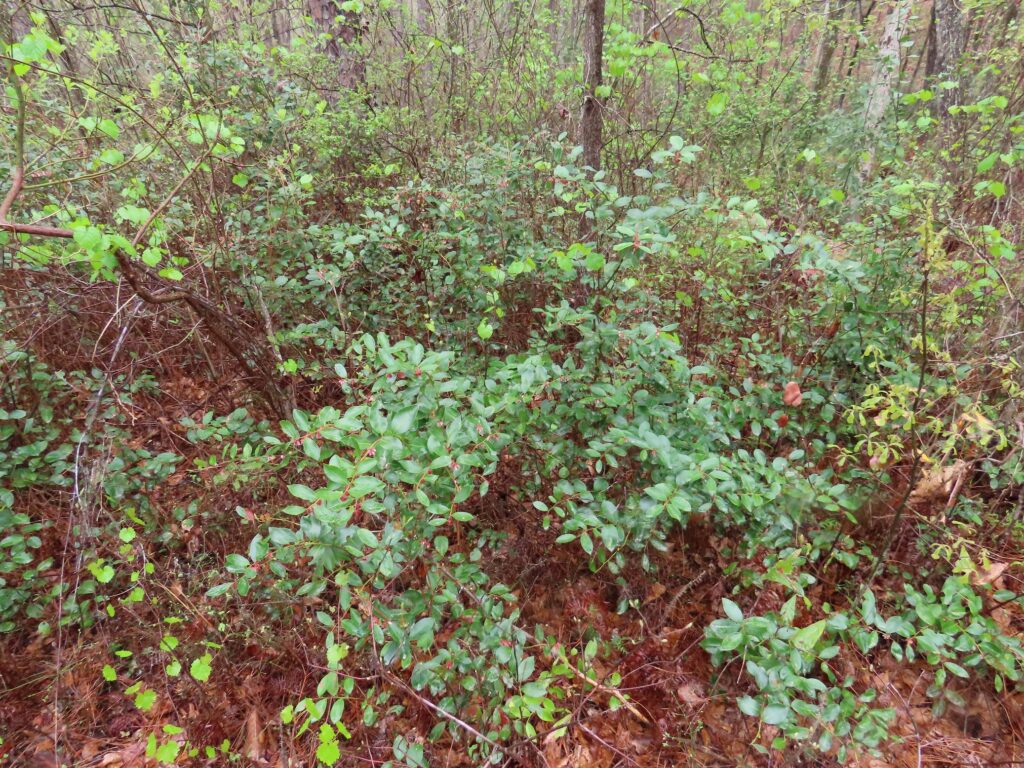
This week for Flora and Fauna Friday we have the perimeter of the pocosin and border of the bay, Shining Fetterbush (Lyonia lucida).
Shining Fetterbush is a spreading shrub found on acidic, moist soils throughout the Lowcountry of SC. It grows from waist to head high with arching, intersecting limbs and spreads to form dense thickets. Its common name, Fetterbush, comes from its impressive ability to restrain, or fetter, anyone trying to walk through the stuff. Often it forms a near impenetrable wall around the margin of a wetland. Fetterbush is commonly found around the rims of pocosins, also known as “Carolina Bays”, and it often borders bogs, fens, and other ephemeral wetlands with highly acidic soils. It can thrive in acidic soils because it is a member of the Heath family, Ericaceae, whose members, to include Blueberries and Azaleas, are especially well adapted to extracting nutrients from even the most acidic of soils. Like many Heaths, Fetterbush has simple, evergreen leaves and, more particularly, those of Fetterbush are about two to three inches long, half as wide, round, and leathery with a shiny surface. It also bears a very Blueberry-like flower, with a half-dozen or so white to pink, pendulous, urn-shaped flowers dangling from every leaf node. Fetterbush blooms very early in spring and is relied upon by several species of our native bees for pollen. Unlike Blueberries, Fetterbush’s flowers mature into hard, dry seed-capsules rather than soft fruits.
Shining Fetterbush is a good example of an indicator species, its presence always indicates two things: highly acidic soils and moisture. An indicator species is a plant or animal whose presence signifies an environmental condition, be it a general indication of ecosystem health or a highly specific site characteristic. Indicator species offer scientists, ecologists, property managers, farmers, and foresters an efficient way to predict site conditions, plan out land uses, and narrow down options in their day to day work and to quickly ascertain what they’re looking at when on a new property.